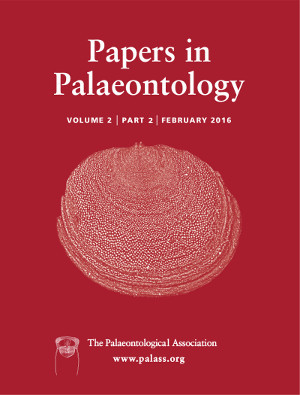Reg. Charity No. 1168330

An abundant and diversified assemblage of early Campanian lithistid Demospongiae has been identified in the Miocene gravels exposed in the Bełchatów lignite mine. Fourteen species of Pleromidae and one species of Isoraphiniidae have been distinguished in the assemblage. Among them, five species (Pachypoterion koeneni Schrammen; P. compactum Hinde; Gigantodesma aurita (Schrammen); Amphilectella piriformis Schrammen; and Heterostinia immanis Schrammen) have not been previously recorded from Poland. Moreover, one new genus and species, Stipesia belchatowiensis, assigned to the family Pleromidae, is described. Streptasters were found in the latter species and in Heterostinia immanis. They represent the first documented in situ microscleres in the fossil species of the Pleromidae. Due to the unique state of preservation of the sponges, significant new data on the choanosomal skeleton and ectosomal megascleres of Cretaceous pleromid and isoraphiniid taxa are also presented. This paper also provides a taxonomic revision of Campanian pleromid and isoraphiniid sponges from southern Poland, derived from museum collections. Six species described by Hurcewicz as new taxa are considered to be junior synonyms of species known from the Upper Cretaceous of Europe. The taxonomic composition of both analysed groups is almost identical to the assemblages from central and southern Poland; a similar composition has been noted among the Pleromidae and Isoraphiniidae in sponge assemblages from the lower and middle Campanian of Germany.